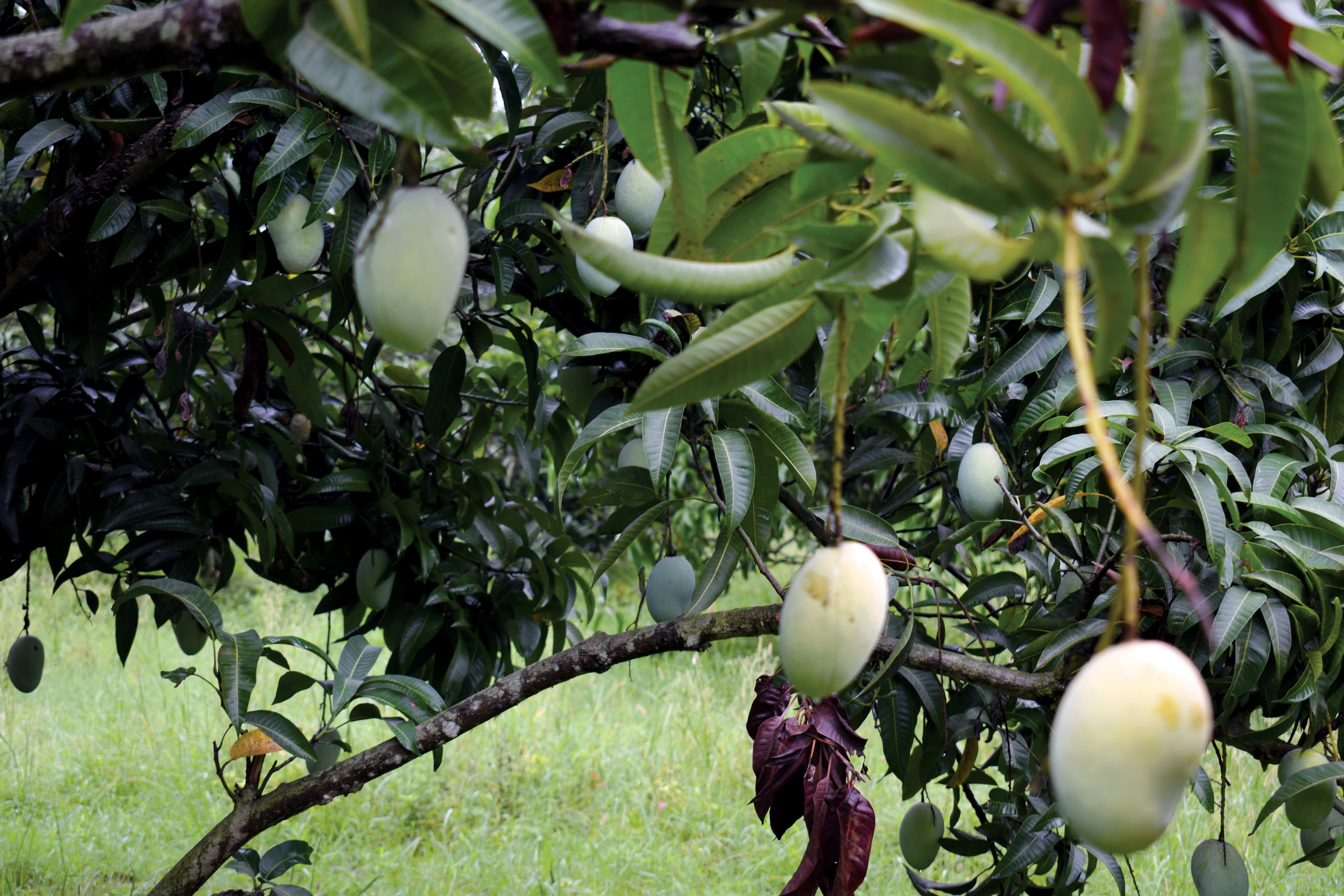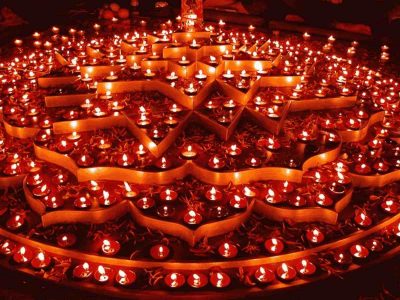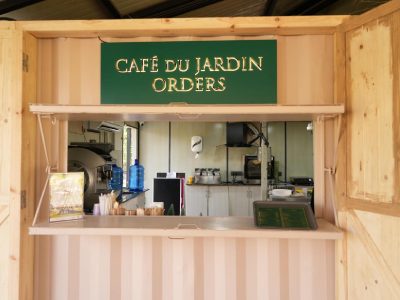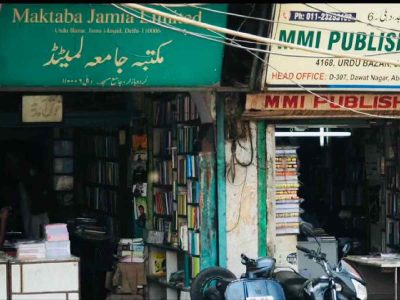If you venture out into Uttar Pradesh’s mango belt, you can trace the journey of the king of fruits from the orchards of Mall, Kakori and Malihabad to consumers’ plates
The trees are watching, I think to myself, as we peel off the mango and sink our teeth into the sweet, juicy pulp. The juice runs down the chin. It’s been years since I ate a mango like this. This is even better for we are in an orchard and the mango leaves are swaying. Maybe the tree feels I stole its fruit, so I thank it for the sweetness it spreads every summer. The seed needs to go back into earth for a new tree to spring forth. The cycle continues.
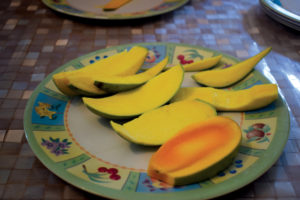
This is the mango belt of Uttar Pradesh, comprising Mall, Malihabad and Kakori. We are in Kakori, a little village with many orchards about an hour’s drive from Lucknow. We are guests of Shahid Iqbal Abbasi. The trees are old and give ripe fruit. But Abbasi got involved in the mango business a few years back and is helped by his old staff, who knows all about orchards and trees. New trees are constantly planted and the big trunks are an indication of the age. Abbassi participates in fairs, exhibitions and is part of the annual Uttar Pradesh mango festival to popularise the fruit and make people understand it better.
Fruit stories
We find this orchard courtesy Jyotsna Kaur Habibullah, married into Lucknow’s iconic Habibullah family and living on the famous Habibullah Estate. She conceptualised the Uttar Pradesh Mango Festival few years back. Like her iconic grandmom Hamida Habibullah who passed away in March 2018, Jyotsna is actively involved in organising farmers’ markets in Lucknow to support local produce and connecting farmers to consumers. Hamida Habibullah was a Parliamentarian, educationist and champion of social causes, as well as the founder of women’s group SEWA.
“The mango festival aims to put the mango growers on the international map,” says Jyotsna, as the mango can be used for many products including ice-creams, sherbets, juices, pickles and more. It is organised by Awadh Mango Growers Association in association with Lucknow’s premier research institute Central Institute for Subtropical Horticulture. This is also affiliated to the Indian Council of Agricultural Research, NABARD, State and National Horticulture Board, Uttar Pradesh Tourism, Mandi Parishad, Hotel and Restaurant Association, et al.
The day before, she had given us a tour of Waaris Manzil, the family’s ancestral estate in village Saidanpur, Barabanki district. She has initiated a centre for children and women there. Computers and weaving are two major activities of this centre.
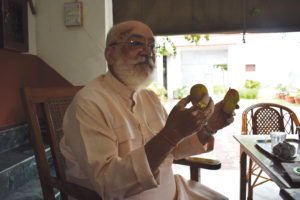
Besides tasting the mangoes from the Habibullah orchards, we also heard mango stories by Himanshu Bajpai. An independent journalist, he learnt Dastangoi or the art of oral storytelling as he likes the creative power of stories. For the children learning at this little centre in Saidanpur, Bajpai had some mango ‘kissas’. The little stories soon became a laughter session as the children settle under a tree to listen.
It was the India we saw in black and white movies with everyone sitting in the open — air-conditioners and walls had not penetrated the country. The fresh breeze builds camaraderie.
Elucidating on this oral art, Bajpai explains that the roots of this Urdu storytelling art can be traced to the times of Amir Khusrau in the 13th century. When Sufi saint Nizamuddin Auliya fell ill, Khusrau began narrating stories to keep the guru happy. It began with ‘Qissa-e-Chahār Dervish’ or The Tale of the Four Dervishes. The saint recovered and prayed that anyone listening to these stories would also be cured. And the stories became a healing art.
More tasting
The two-day mango journey is fruity and fun. From Kakori, we drove to Mall — no not a shopping mall, this is the village where the grand old mango man of the area lives, Kunwar Bhupendra Singh has been living the mango life forever. The exuberant and knowledgeable man lives for his orchards and mangoes.
His haveli is where people sit in the verandah to discuss the day’s affair. Trees, flowers, old world manners and a dog greet us. His wife sends tea and snacks the moment our arrival is announced. And then the mango talk takes off. While the area has developed and cars can now be driven to the orchards, Singh would earlier go on his horse to see the orchards. People come to him from far off villages for advice on orchards and fruits and marketing.
The research institute has sent him their latest hybrid mango for feedback. Did you say people from Awadh are laidback?
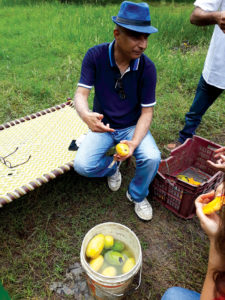
An hour later, he drives us to his orchard Madhav Udyan. Not just mangoes, this is truly a fruit lover’s delight. The area is filled with fruits of all kinds. He has built a homestay of kinds and lets guests come and enjoy the country life. “I spend time here daily to see to the orchards,” Singh tell us.
Cutting and eating a mango is an art, best learnt from the man who lives and breathes them. “The mango has to be smelt before being cut. And it’s cut in a certain manner so that you get to eat the best parts,” he uses the knife deftly, as we watch him.
The veteran can recognise the different stages of their ripening too, even as they lie in the bucket of cold water. In his orchard alone, as many as 15 odd varieties flourish and he remembers all the trees and the fruit they bear.
Singh cut into one too many for us, giving us a taste of the sweet king of fruits. We taste a good 10 of them. Each variety also has a sub-variety, from Langda to Safeda to Chausa…the mango slices never seem to finish.
The mango belt is buzzing as the annual Uttar Pradesh Mango Festival is not far away. Like every year, May-June-July are the best months to enjoy the sweet fruit and its many products.
Even in Delhi, the haats and hotels will be buzzing with fests and innovative dishes. But there’s nothing more joyful than eating the fruit under the mango tree with buzzing bees, swaying leaves and flowing breeze. Once again, the trees will come alive with children climbing to find their share and the guards trying to catch them.
Oh mango! Our love for you is eternal, may we travel to more belts in the country to enjoy your sweetness.
All about mangoes
- Mango has been cultivated in southern Asia for nearly 6,000 years. India ranks first among world’s mango producing countries, accounting for about 52% of the world’s mango production.
- In India, about 1,500 varieties of mango are grown including 1,000 commercial varieties. In Uttar Pradesh, popular varieties found are Bombay Green, Dussehri, Langda, Safeda Lucknow, Chausa, Fazli.
- Major mango producing states are Uttar Pradesh, Andhra Pradesh, Bihar, Gujarat, Karnataka, Maharashtra, Orissa, Tamil Nadu and West Bengal. Other states where mangoes are grown include Madhya Pradesh, Kerala, Haryana, Punjab.
How to grow it
- Mango can be propagated from seed or vegetatively. Planting is usually done in the month of July-August in rainfed areas and during February-March in irrigated areas.
- Mango is well adapted to tropical and sub-tropical climates. Dry weather before blossoming is conducive to profuse flowering. Rain during flowering is detrimental but rain during fruit development is good.
- The orchard starts bearing from sixth year onwards and the economic life of a mango tree exceeds 35 years.
Uses and benefits
- A rich source of Vitamin A and C.
- Mango has fattening, diuretic and laxative properties. It helps to increase digestive capacity.
- Raw fruits of local varieties are used for preparing products such as raw slices in brine, amchur, pickle, murabba, chutney, panna (sharbat).
- The wood is used as timber, and dried twigs are used for religious purposes.
- The mango kernel also contains about 8-10% good quality fat which can be used for saponification. Its starch is used in confectionery industry.
- A lion’s share of Indian mango goes to the Gulf countries. Efforts are being made to exploit European, American and Asian markets.
(info: http://www.nhb.gov.in/report_files/mango/MANGO.html)

